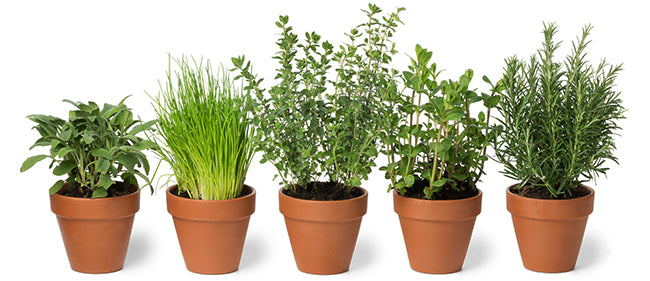Sure, growing a vegetable garden is fun, healthy and rewarding. But it’s also a fantastic way to cut down on grocery bills. The fruit, vegetables and herbs you grow naturally, or even organic, really are superior to anything you’ll find in a store. The taste of fresh-picked vegetables is simply incredible. It’s simply the best way to get kids and the whole family to eat more fruit and veg!
Read our magazines:
How big should the vegetable garden be?
For a first vegetable garden, an 8 m2 area will be sufficient. You can always expand and add more plants and varieties next year when you've got some experience under your belt.
- In-ground garden: 2 m x 4 m rectangle
- Squares: 2 squares of 2 m x 2 m
- Beds: 4 raised beds 1 m x 2 m
Choosing which vegetable plants to grow
Garden rules: plant the vegetables you like to eat and cook with. It's so important from a motivational standpoint. If nobody in the family likes radishes or turnips, don't plant them! If everyone adores cucumbers and beans, plant extra.

Bulb, leafy and cruciferous vegetables
| Sun Exposure | Numbers | Where to plant | Seedlings |
Garlic | Full Sun | 7 cloves | In-ground | Direct-sow (in the fall) |
Onions, Green onions, Leeks | Full Sun | 20 to 30 plants | In-ground | Start indoors (mid-March) |
Lettuce, Spinach* | Full Sun Part Shade | Stagger planting for continuous harvest. 3 to 4 plant every few weeks | In-ground, or raised table garden
| Start indoors (mid-April) |
Cabbage, Cauliflower, Broccoli, Bok choy, Brussel sprouts | Full Sun Part Shade | 3 to 5 plants | In-ground
| Start indoors (mid-April) |

Fruit vegetables
| Sun Exposure | Numbers | Where to plant | Seedlings |
Cucumber | Full Sun | 2 plants | In-ground or pot with a support structure (trellis) | Direct-sow (early June) |
Zucchini | Full Sun | 2 plants | In-ground or pot with a support structure | Direct-sow (early June) |
Squash and Melons | Full Sun | 2 plants | In-ground | Direct-sow (early-June) |
Beans* | Full Sun Part Shade | 5 climbers or 2 rows | In-ground or pot with a support structure (trellis) | Direct-sow (early June) |
Hot and Sweet Peppers | Full Sun
| 3 plants | In-ground or pot with a support structure | Start indoors (mid-March) |
Tomatoes* | Full Sun
| 1 cherry tomato plant 1 medium-sized tomato plant 1 large tomato plant | In-ground or pot with a support structure | Start indoors (mid-April) |
Peas* | Full Sun Part Shade | 1 seed packet | In-ground with a support structure (trellis) | Direct-sow (late May) |

Root vegetables
| Sun Exposure | Numbers | Where to plant | Seedlings |
Beets* | Full Sun Part Shade | 1 seed packet | In-ground | Direct-sow (mid-May) |
Carrots* | Full Sun | 1 seed packet | In-ground | Direct-sow (mid-May) |
Turnips | Full Sun | 3 to 4 | In-ground | Direct-sow (mid-May) |
Radishes | Full Sun Part Shade | 1 seed packet | In-ground, or raised table garden. | Direct-sow (early May) |
Potatoes | Full Sun | 5 to 10 plants | In-ground or deep container | Direct-sow (mid-May) |

Herbs
| Sun Exposure | Numbers | Where to plant | Seedlings |
Basil | Full Sun Part Shade | 4 plants | Pot on the deck | Start indoors (mid-April) |
Chives* | Full Sun Part Shade | 1 to 2 plants | In-ground
| Start indoors (late March) |
Parsley* | Full Sun Part Shade | 1 to 2 plants | Pot on the deck | Start indoors (late March) |
Mint | Full Sun Part Shade | 1 plant (note: plants spread quickly) | Pot on the deck | (buy) |
Cilantro | Full Sun Part Shade | 1 to 2 plants | Pot | Direct-sow (late May) |
Oregano | Full Sun Part Shade | 1 plant | In-ground
| (buy) |
Thyme | Full Sun Part Shade | 1 plant | In-ground | Start indoors (early March) |
Rosemary | Full Sun Part Shade | 1 plant | In-ground | (buy) |

Small fruits and berries
Buy plants for these.
| Sun Exposure | Numbers | Where to plant |
Strawberries* | Full Sun Part Shade | 3 to 4 plants | Hanging planter |
Raspberries | Full Sun Part Shade | Bush - depending on space | In-ground |
Blueberries, Haskap berries, Gooseberries, Blackcurrants | Full Sun Part Shade | Bush - depending on space | In-ground |
*These fruits, vegetables and herbs are easy to grow and therefor ideal for a first vegetable.
 Plants that help others
Plants that help others
Here are plant associations in the garden that enable plants to help each other - which make them garden staples.
- Parsley and chives, for example, repel aphids and other insects.
- Nasturtiums and marigolds, both edible flowers, repulse pests but attract pollinators.




